The concept is simple. Buy low, sell high. The trouble is that all my opponents can sway the market! Exchange is a stock trading game published by Bicycle (yes, the playing card company). This game was originally independently published in 2018 and recently received a fresh coat of paint and broader distribution.
While I originally had no desire to check this one out, I found a lot to enjoy in this light strategy game.
A Trip Back in Time
Exchange takes us back to the dawn of Wall Street in the 1790’s. Each player takes on the role of one of the original 24 stockbrokers who set the foundation of the New York Stock Exchange. You’ll start with a player card with the name of one of these real life stockbrokers. Each stockbroker has a certain number of stock along with cash to begin the game.
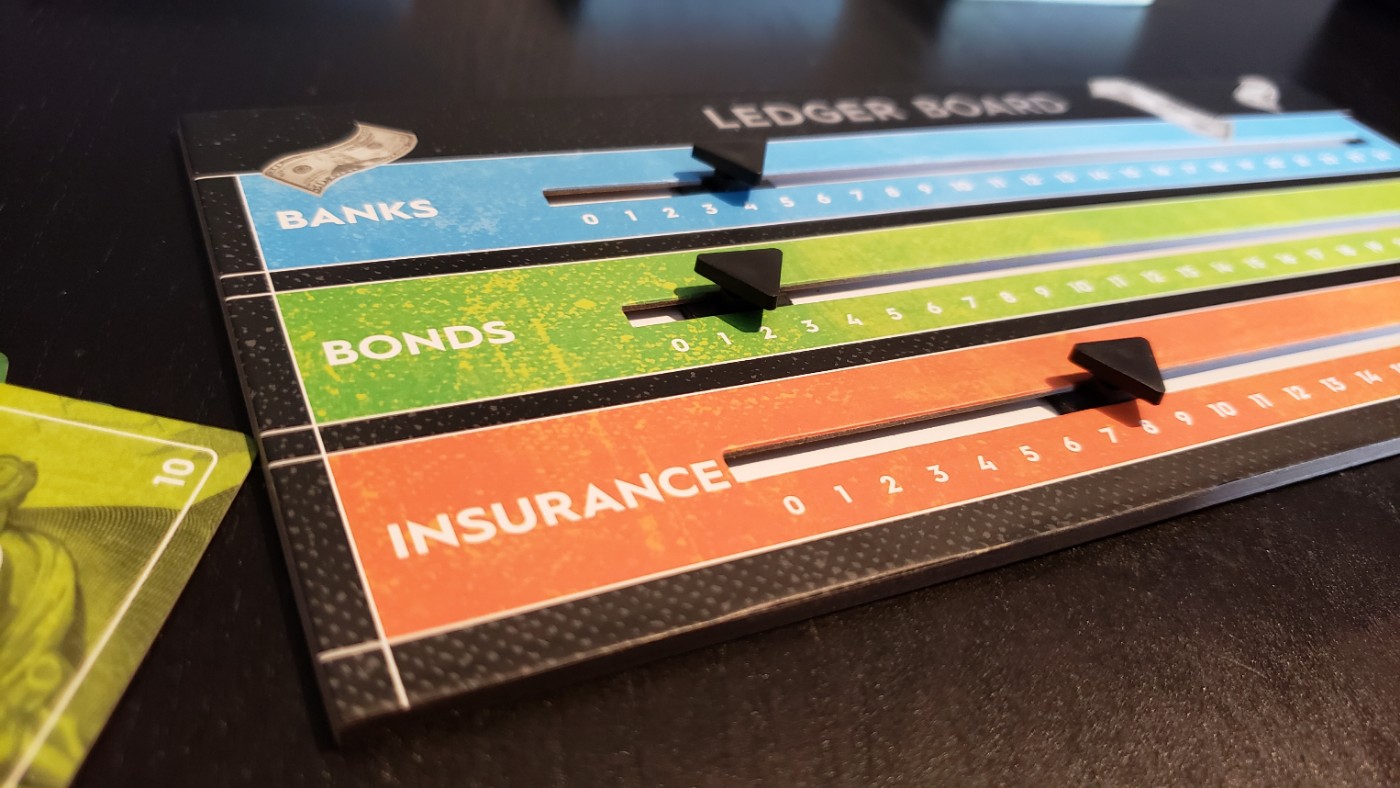
In each of the 5 rounds of the game, you’ll deal in buying and selling banks, bonds and insurance. Bicycle has done an excellent job with the player boards that keep track of these stocks. The sliders feel durable and could definitely stand up to lots of wear and tear.
Each of the 5 rounds are broken into 3 phases. In phase 1, players choose a category of stock that they plan to deal in for that round. Players place a card into the phase 1 sleeve and everyone reveals these simultaneously. In phase 2, players choose to buy or sell stock in their chosen category. The sleeve that holds this card will only show your opponents whether you plan to buy or sell but won’t tell them the number of stock you’ve chosen. In phase 3, everyone chooses to influence the market positively or negatively in a specific stock.
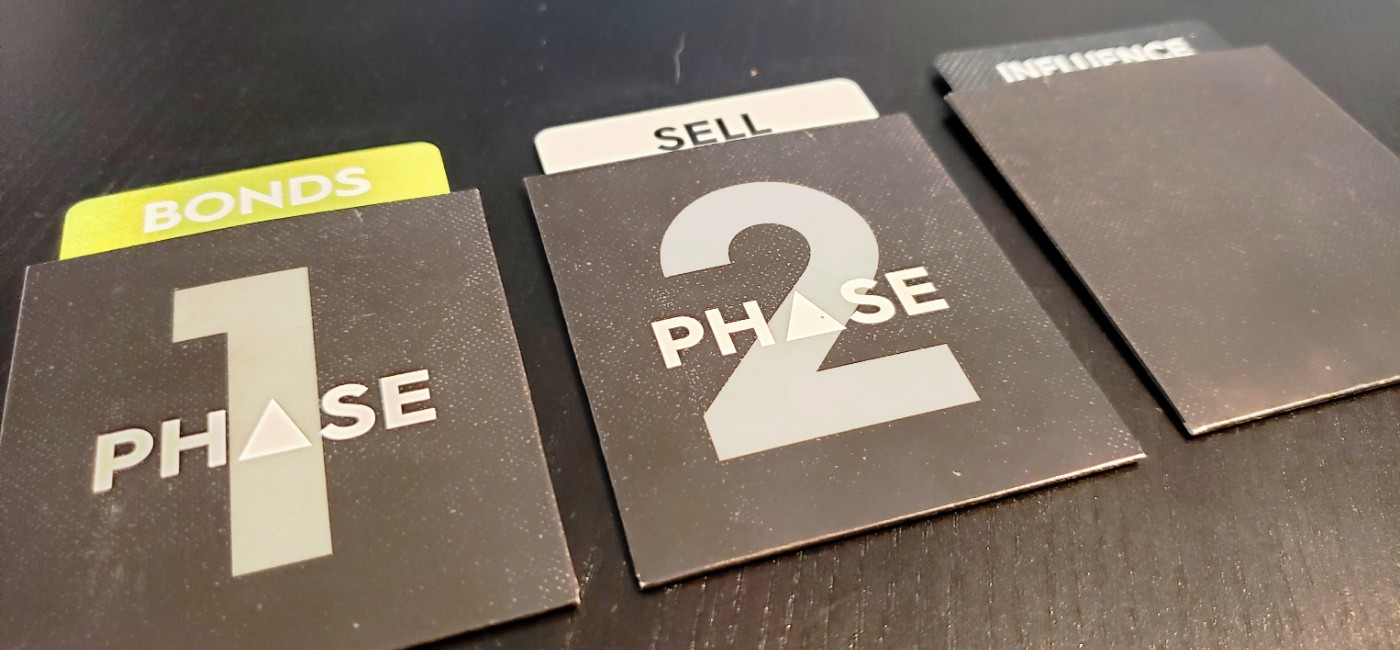
As each phase of Exchange passes, players begin to form a strategy and either plot against the players at the table or adjust the price of their desired stock. In the center of the table is the market board which shows the current value of the 3 types of stock. If a particular stock drops too low, it’s sent soaring to the top of the market. If a stock gets to pricey, the bottom falls out and it’s sent into a free fall.
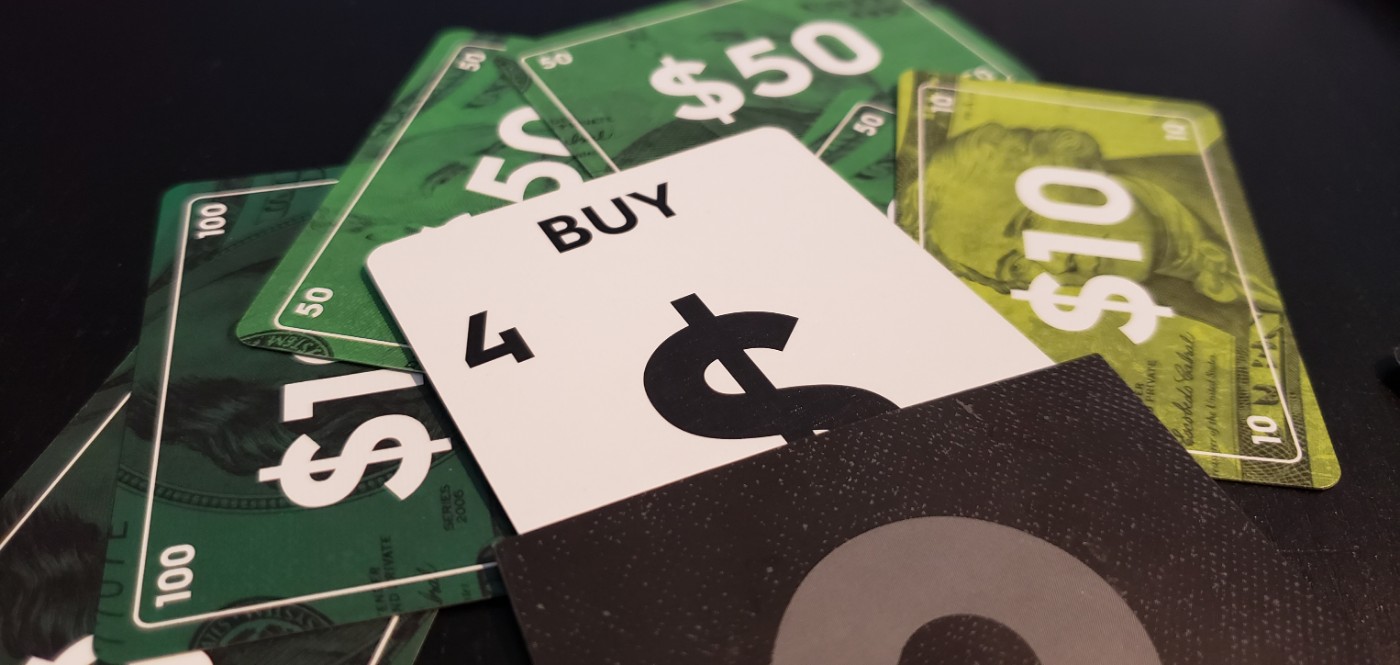
Once all 3 phases are revealed, a Market Forces card is flipped over. This can cause a single stock to rise or fall or change based on the number of people that are trading in that category. This is the wildcard of Exchange that you have to keep in mind. It’s so hard to bend the market in the exact way that you want because of the Market Forces card.
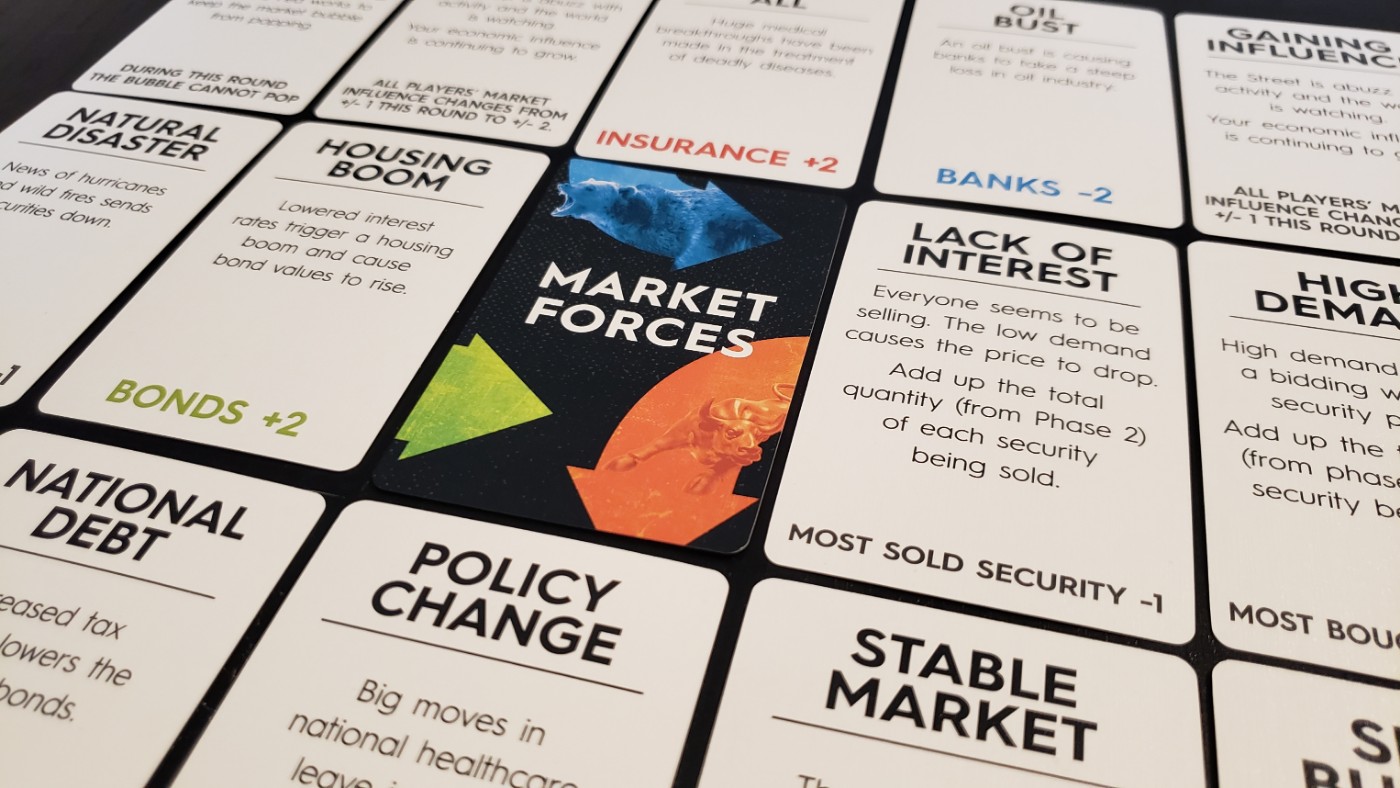
After the market prices are adjusted for the round, everyone buys or sells the number of stock they decided on in phase 2. At the end of a round, the player with the most money will control the Lobbiest. This gives that player an additional influence over a stock during phase 3 of the next round.
After 5 rounds, players get one last influence phase. Players will receive money for the stock in their ledger and the player with the most money wins the game.
Playing the Markets
The only reason why I gave Exchange a chance was because I was really impressed with the quality of the components. The cards are well made, the phase sleeves intrigued me and the player boards are built for the long haul.
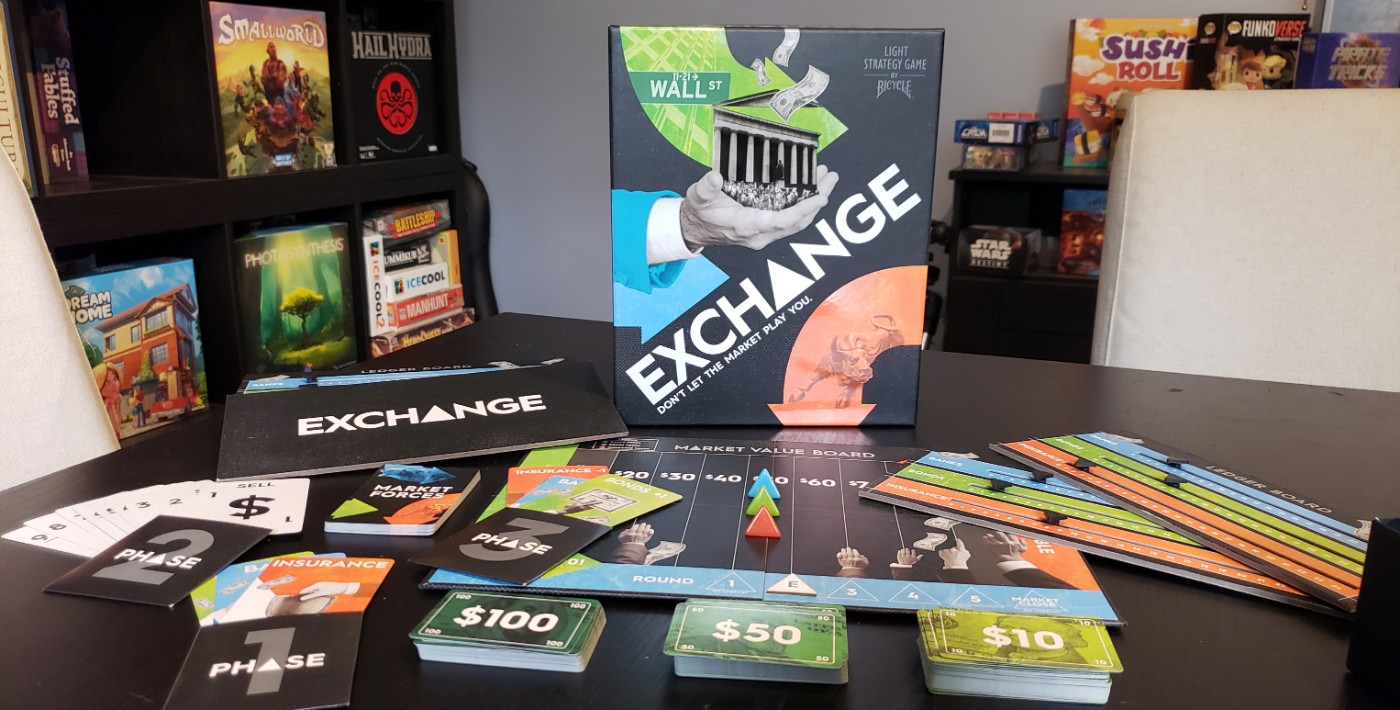
If I had to give you the elevator pitch for Exchange, I would ask you to play “a backstabbing, stock trading party game” with me and my friends. Exchange is too light to bring around your hardcore gaming friends and that’s OK. This game is one that I would easily pull out after a family dinner and smack talk my in-laws.
Once you get the basics down, Exchange can be really fast-paced. Every phase is giving just enough info to screw over your opponent. As much as you plot and plan, it’s devastating (and hilarious) when a stock hits the Market Bubble and drops from $90 down to $10. I’ve spent the majority of a round excited that I would be pulling in $450 on the sale of 5 stock only to see the price drop leaving me with only $50 in sold stock.
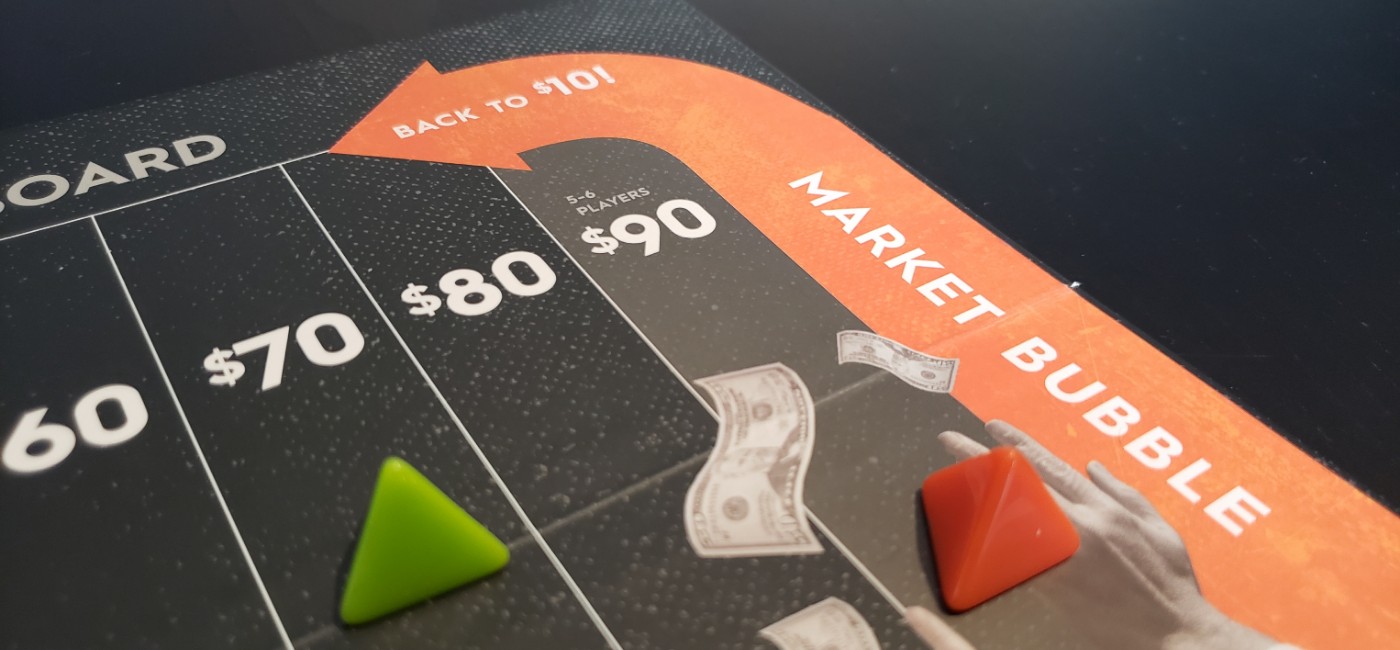
Exchange is a game about paying attention to everyone at the table and still knowing that one person could ruin your plans. Sometimes catching your opponents off guard with an unlikely play is the best way to shake up a game.
It’s hard to imagine an economic party game, but I feel like Exchange fits that bill. The game plays 3 to 6 players and I’ve easily had the most fun at the higher player counts.
Exchange even offered some great teaching opportunities as we played the game with our kids. We were able to give context for how the stock market works and the strategies that work in real life. There are some legitimate lessons that can be taught using this game because of it’s simple structure.
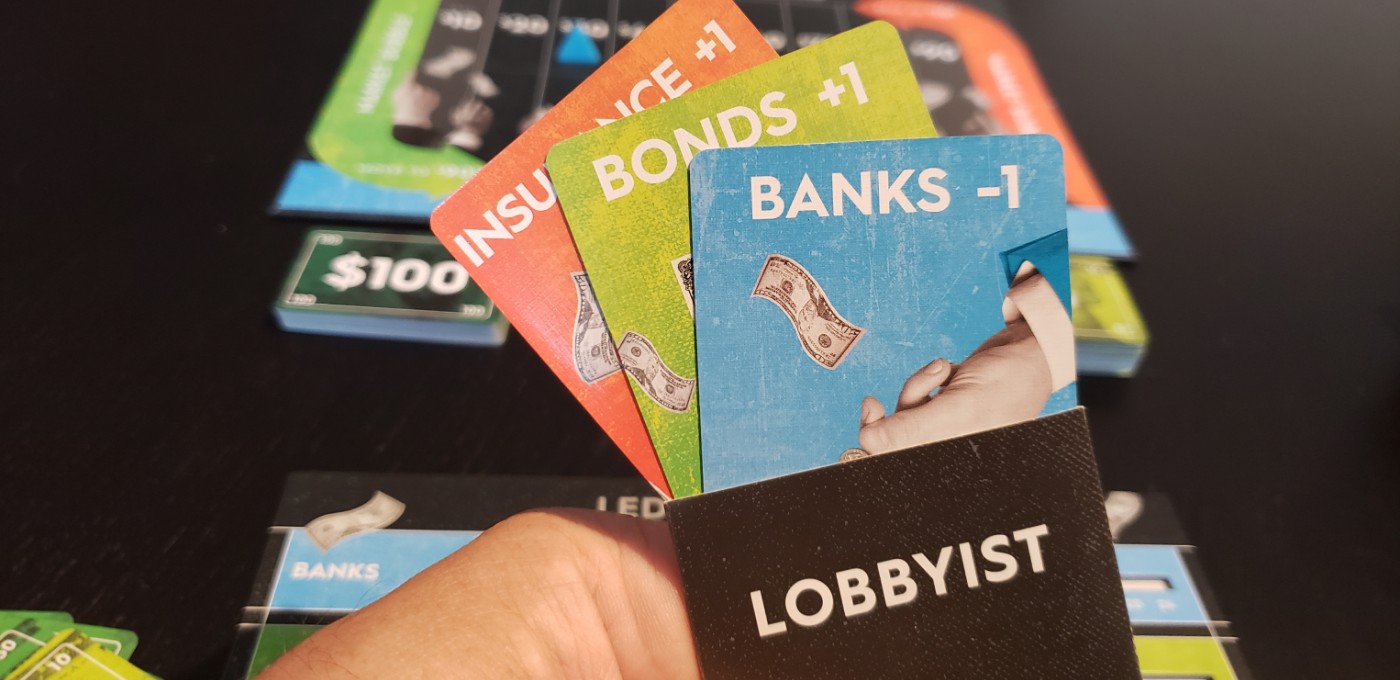
It would be easy to dismiss Exchange because it lacks depth. However, I would challenge you to see what this game does offer. We’ve had a great time playing this game with family and friends. Outwitting the other opponents and selling your stock for a massive gain is exciting.
Bicycle has done a great job both in the production and the presentation of Exchange. If you’re looking for an easy to teach, fast-paced stock game for the average gamer, I would strongly suggest you check this one out.
You can purchase Exchange at your local game store or online through Amazon today.
Bicycle Games provided us with a retail copy of Exchange for this review. This in no way influenced our opinion of the game.
Highs
- Feels like an economic party game
- Fast-paced, backstabbing fun
- Easy to teach and has some educational value
Lows
- Market Forces cards can be brutal
- Don’t look for deep strategy here
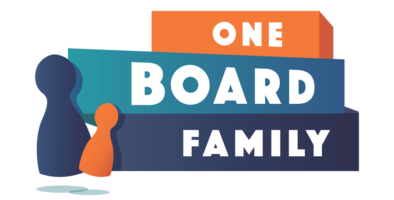
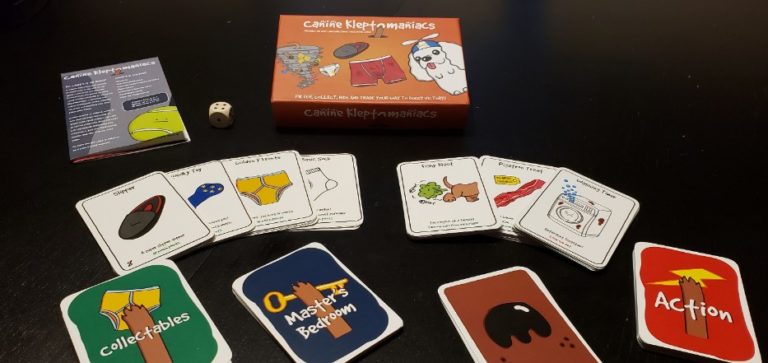
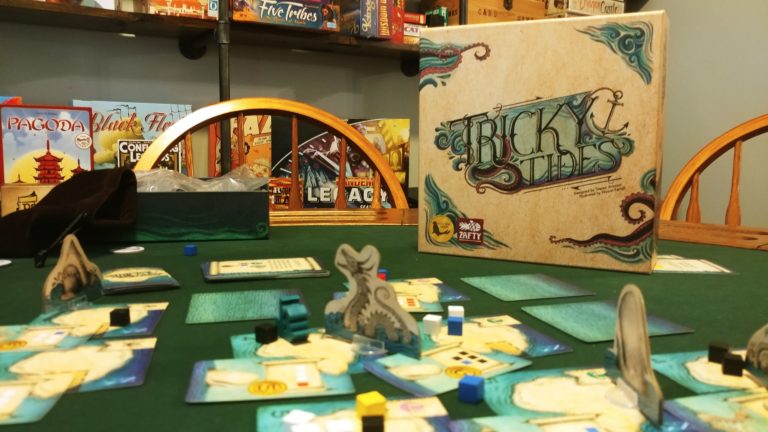
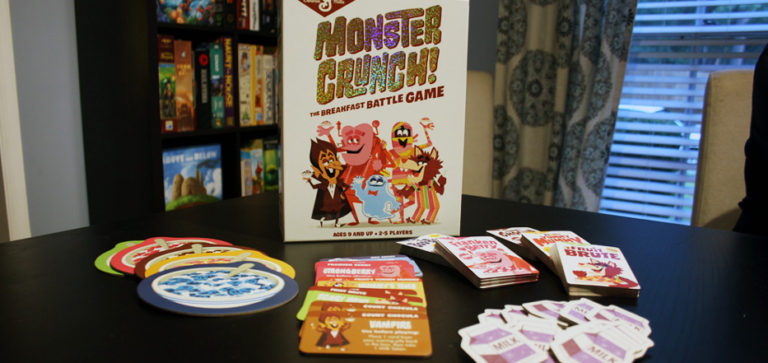

[…] game that took me by surprise this year was Exchange. This stock trading game for up to 6 players was useful for us explaining how stock markets work. […]